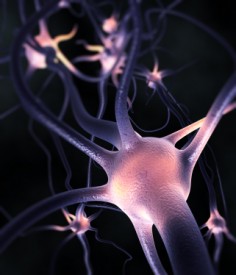 In an effort to understand this interplay between literacy and these faculties, Stanford University neuroscientist Jason Yeatman examined the correlation between reading ability and the growth of white matter tracts that connect different regions of the brain. Yeatman and his colleagues studied students aged 7 to 12 over the course of three years. During that time, the team used brain scans to visualize the development of these white matter tracts – specifically, the arcuate fasciculus connecting the brain’s language centers, and the inferior longitudinal fasciculus, which links these centers to the areas that process visual input.
In an effort to understand this interplay between literacy and these faculties, Stanford University neuroscientist Jason Yeatman examined the correlation between reading ability and the growth of white matter tracts that connect different regions of the brain. Yeatman and his colleagues studied students aged 7 to 12 over the course of three years. During that time, the team used brain scans to visualize the development of these white matter tracts – specifically, the arcuate fasciculus connecting the brain’s language centers, and the inferior longitudinal fasciculus, which links these centers to the areas that process visual input.
They found that:
- In strong readers, signals in these tracts started off weak and strengthened over the three years.
- In weaker readers, the connections were relatively good, but declined over time.
Yeatman and his colleagues concluded that the reason for such differences lie in two processes related to brain plasticity:
- Myelination, how highly-used nerve fibers become better transmitters over time; and
- Pruning, whereby unused connections and fibers are eliminated.
In short, their studies indicate that:
- In good readers, pruning and myelination are working and developing at even rates.
- In poor readers, these two processes are out of sync and thus the connections that facilitate reading processes do not form as effectively.
How might this understanding help us as educators? Previous studies (linked below) have shown that we can influence brain development with Fast ForWord®, improving reading, fluency and vocabulary with Fast ForWord Language and Fast ForWord Reading and Reading Assistant. Through the training and reinforcement that such tools afford learners of all skill levels, we can select and strengthen pathways through the brain. This is the true power of brain plasticity – the ability to change the physical structure of this most dynamic organ of the human body.
With Yeatman’s research, we now face the potential of being able to time such interventions for maximum benefit. If we can identify the optimal time when these processes of myelination and pruning are most in balance, such a moment might represent the perfect window for a student to experience maximum success with these interventions.
Resources and links:
Brain connectivity predicts reading skills
Development of white matter and reading skills
Neural mechanisms of selective auditory attention are enhanced by computerized training: Electrophysiological evidence from language-impaired and typically developing children. (See a YouTube videofor explanation of this study)
Related Reading:
The Reading Brain: How Your Brain Helps You Read, and Why it Matters
What Makes a Good Reader? The Foundations of Reading Proficiency

